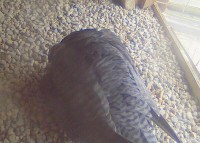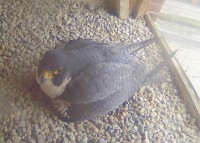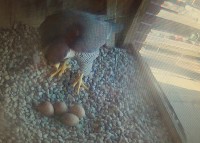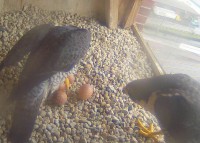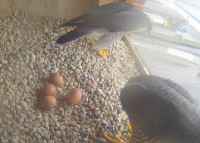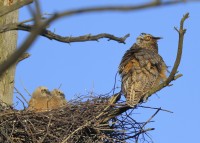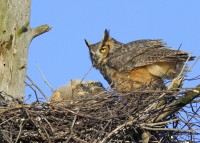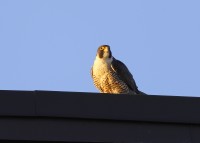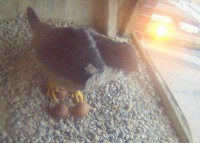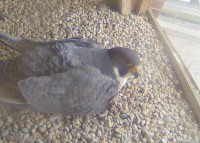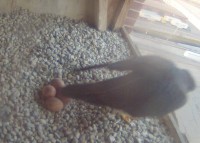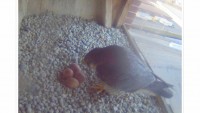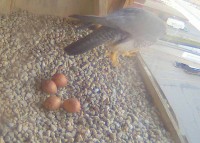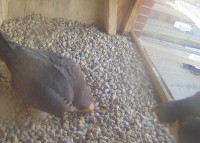Lawrence Peregrines: sharing duties!
April 30, 2018 in In the Nest Box, lawrence peregrines, Peregrine Falcons Eastern Massachusetts, Peregrine Falcons Massachusetts
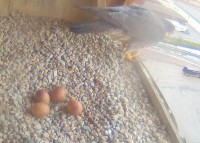 The peregrines started the day under overcast skies, with wind out of SW at 6MPH and temperature at 41°F. The forecast calls for scattered showers before 2pm, then showers likely and possibly a thunderstorm between 2pm and 5pm, then scattered showers and thunderstorms after 5pm. Some of the storms could produce small hail. Cloudy, with a high near 51. Southwest wind around 5 mph becoming calm in the morning. Chance of precipitation is 60%. New rainfall amounts of less than a tenth of an inch, except higher amounts possible in thunderstorms.
The peregrines started the day under overcast skies, with wind out of SW at 6MPH and temperature at 41°F. The forecast calls for scattered showers before 2pm, then showers likely and possibly a thunderstorm between 2pm and 5pm, then scattered showers and thunderstorms after 5pm. Some of the storms could produce small hail. Cloudy, with a high near 51. Southwest wind around 5 mph becoming calm in the morning. Chance of precipitation is 60%. New rainfall amounts of less than a tenth of an inch, except higher amounts possible in thunderstorms.
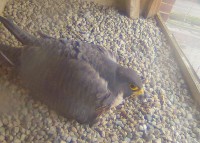 This morning started off with the female rising up for a stretch and a walk to the edge of the nest box prior to departing and then returning minutes later. This is very normal first thing in the morning. When both parents are incubating, it makes a huge difference. This new male has been a very active part of the incubation process. Normally, the male takes a smaller share in the overall incubation duties. Most nights, the female peregrines will be on incubation duty. The male does most of the hunting for the pair during the incubation period. Often the male, with food, will call the female off of incubation to provide an aerial transfer of food, or, bring food to a nearby perch. Seldom does the male bring food to the nest.
This morning started off with the female rising up for a stretch and a walk to the edge of the nest box prior to departing and then returning minutes later. This is very normal first thing in the morning. When both parents are incubating, it makes a huge difference. This new male has been a very active part of the incubation process. Normally, the male takes a smaller share in the overall incubation duties. Most nights, the female peregrines will be on incubation duty. The male does most of the hunting for the pair during the incubation period. Often the male, with food, will call the female off of incubation to provide an aerial transfer of food, or, bring food to a nearby perch. Seldom does the male bring food to the nest.
